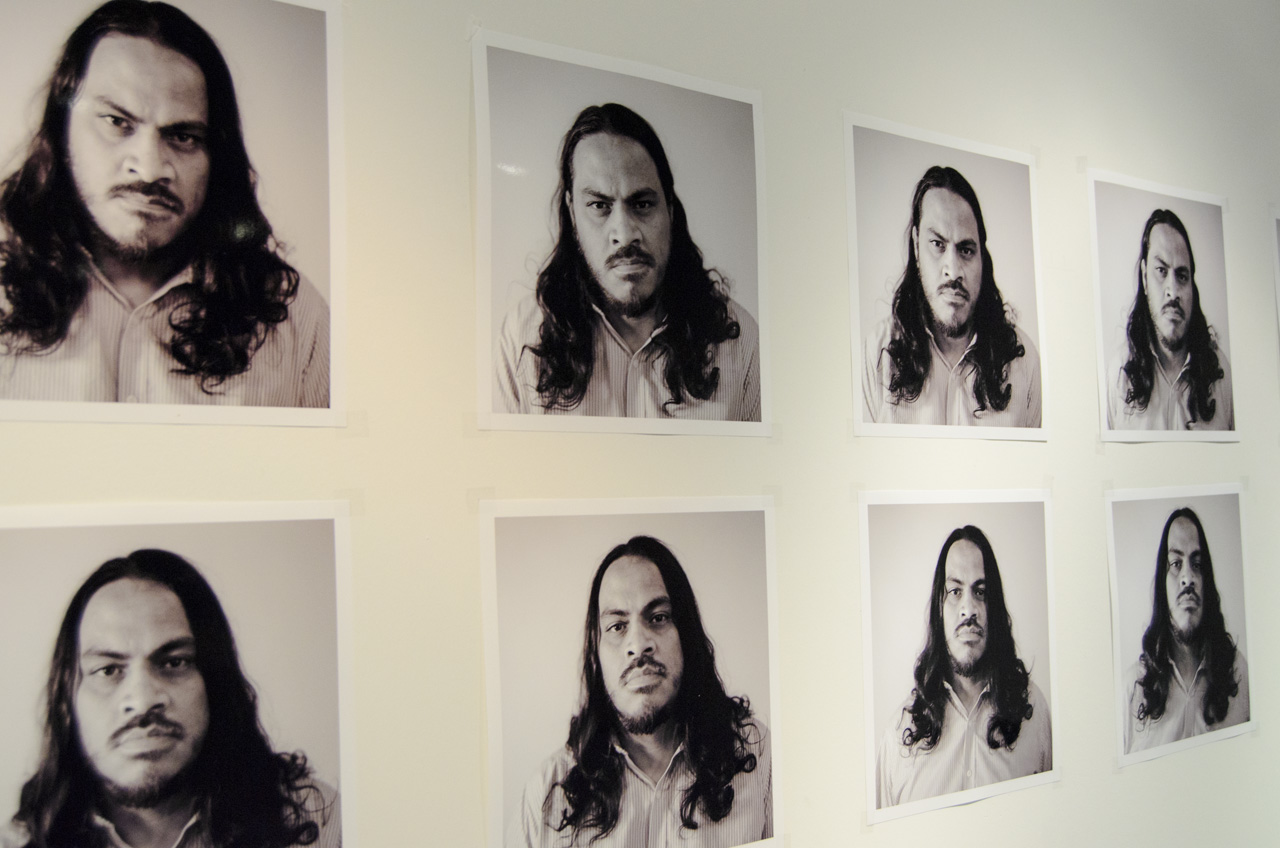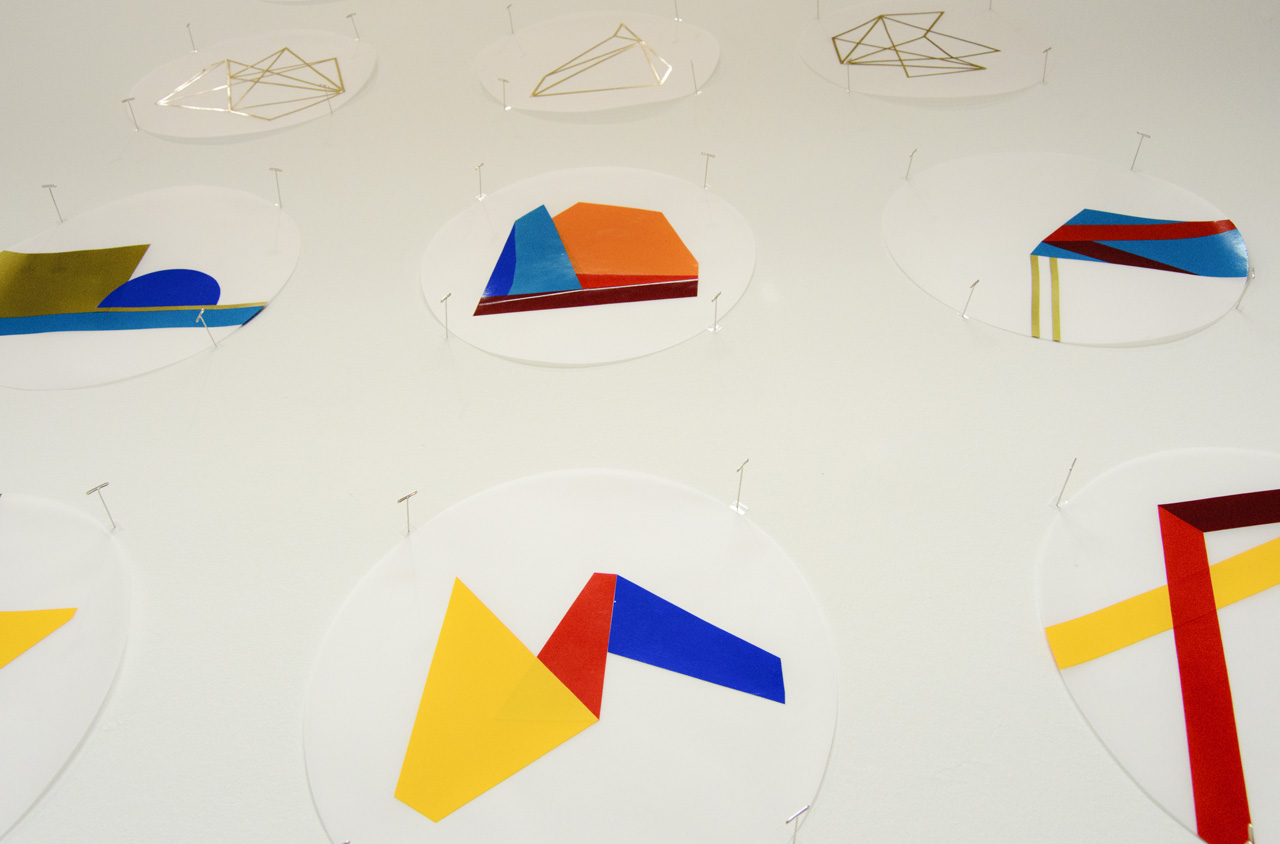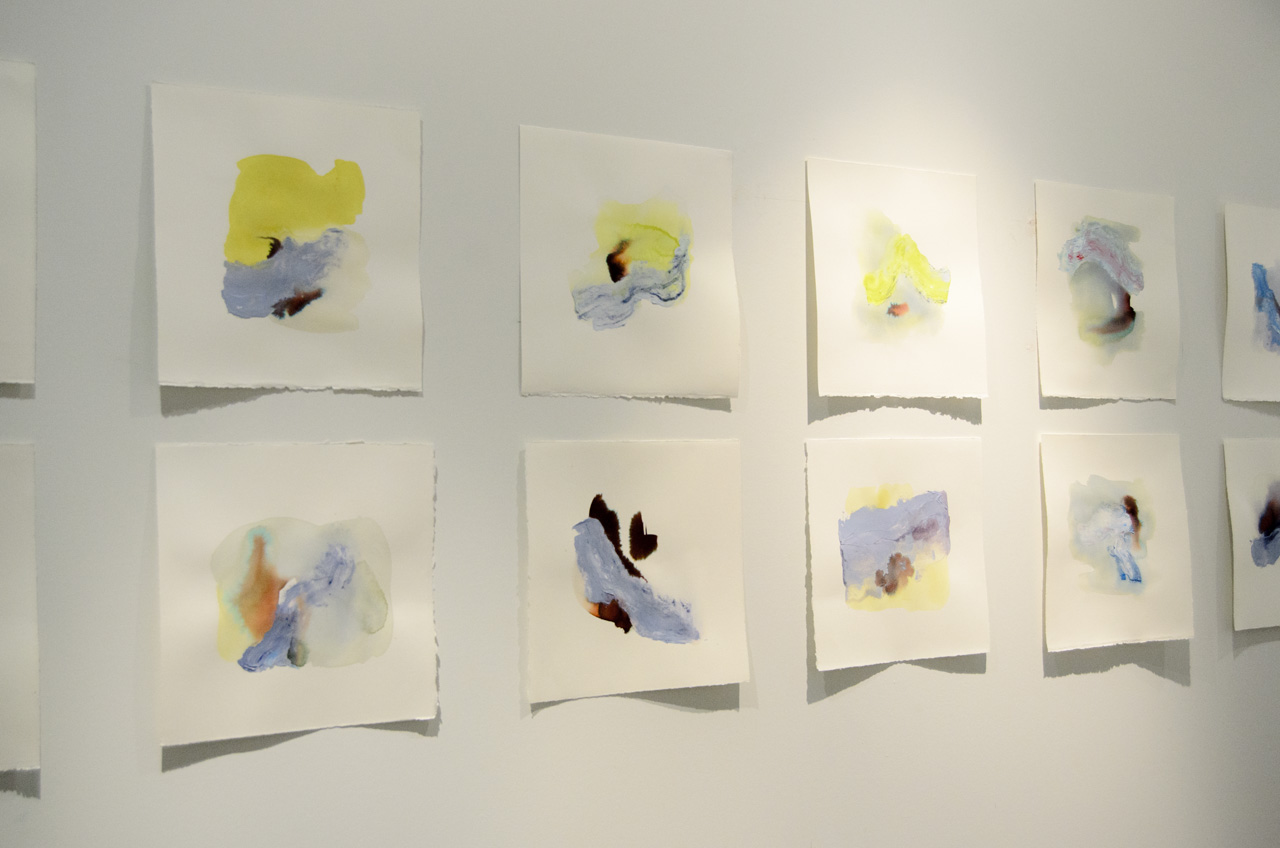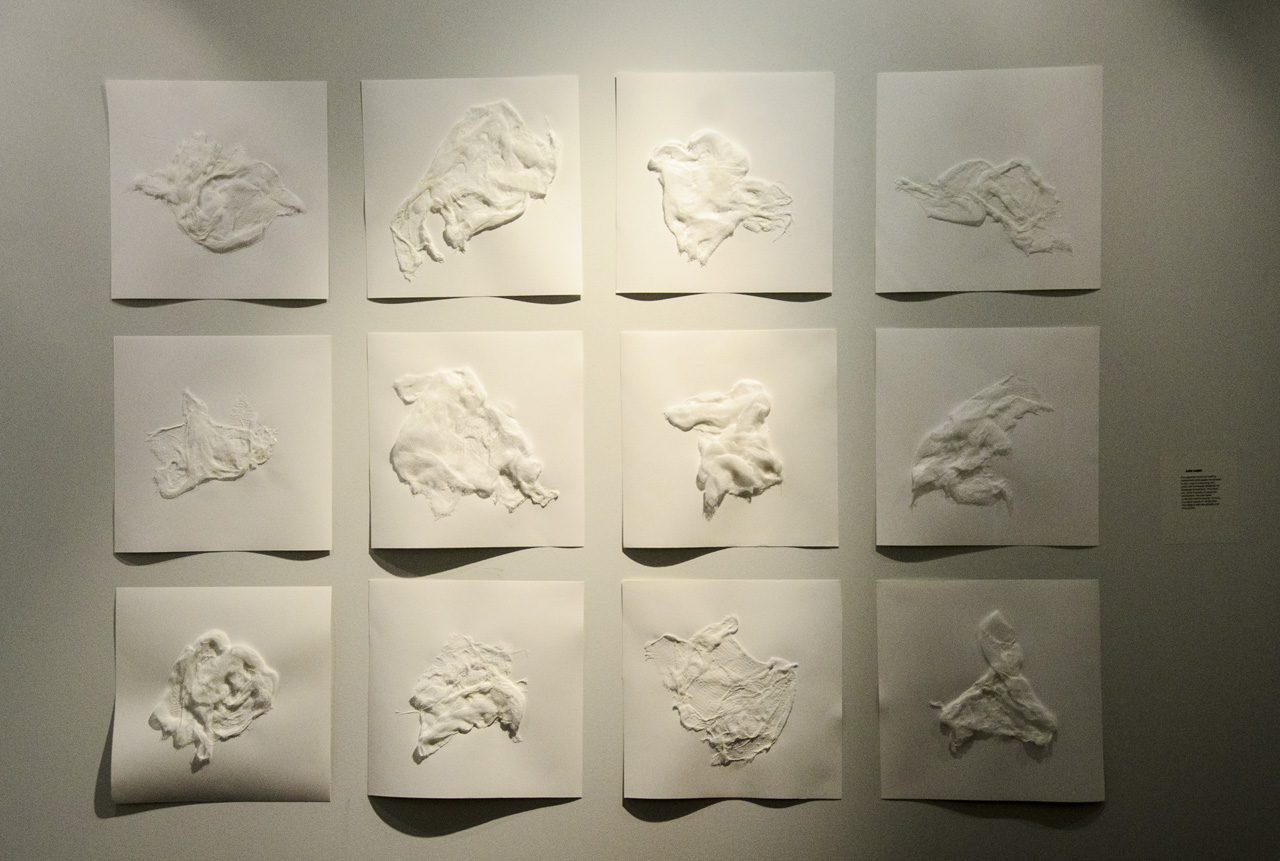The SATO exhibition holds its name from the peculiar nature of its location, or rather, locations: San Antonio and Toronto. While works by a group of Toronto artists (Steve Driscoll, Inez, Christian McLeod, Steve Rockwell, Scott Silverthorn) opened in San Antonio, Texas on October 11, 2014 at the 107 Gallery in the Lonestar ArtsDistrict, the Lullwood Group artist collective from San Antonio presents Toronto with a body of work unified formally – pieces in each series are 12”x12” – and thematically: a meditation on the idea that artworks may produce a “quiet and intimate conversation” with the viewer. The series by Joseph Duarte, Joe Harjo, Julie Ledet and Connie Swann are set in booths with always one or two transparent walls, which permit for these pieces to interact with each other and with works by Esteban Delgado and Clay McClure, situated in the hallway, through an overall discreet pattern, while also confronting the viewer individually in each enclosed location. The exchange show was organized by Steve Rockwell, publisher and editor of dArt International magazine, which is well distributed in Texas as well. Rockwell, who is also a Toronto artist, has discussed the works by the Lullwood Group for us.
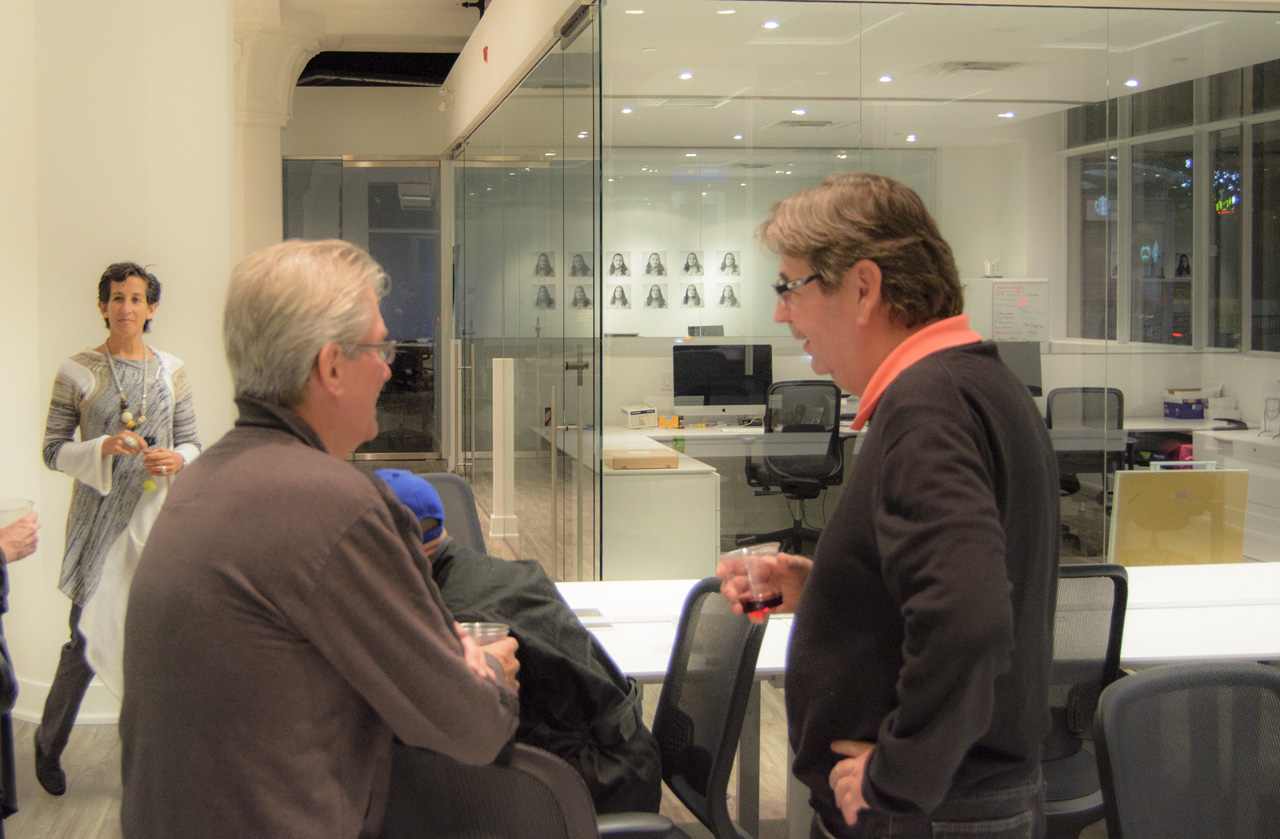 Guests at the opening reception on October 16, 2014.
Guests at the opening reception on October 16, 2014.
The gaze in Joe Harjo’s series of self-portraits mesmerizes the viewer, while slight variations between each photograph produce an eerie sense of an unfolding action, almost cinematic in its flow, a feeling which is shattered upon closer examination of the images. Those staged facial expressions imitate and ridicule the turn-of-the-century documentation of indigenous peoples by Edward S. Curtis, who imposed costumes, poses and expressions onto his subjects. Harjo decries that the lasting influence of photographs created exactly 100 years ago can still be felt in contemporary culture, and seeks to dispel these stereotypes.
Powerful presence is similarly striking in the other, more abstract works in the exhibition. The sculptural aesthetics of Joseph Duarte’s wooden compositions is reinforced by the tactile quality of the material. Perfectly symmetrical, these patterns are based on the details of the artist’s grandmother’s quilt. Duarte, a U.S. marine of eight years and veteran of the Iraqi war, has transformed these tender, domestic patterns into rough, angular objects.
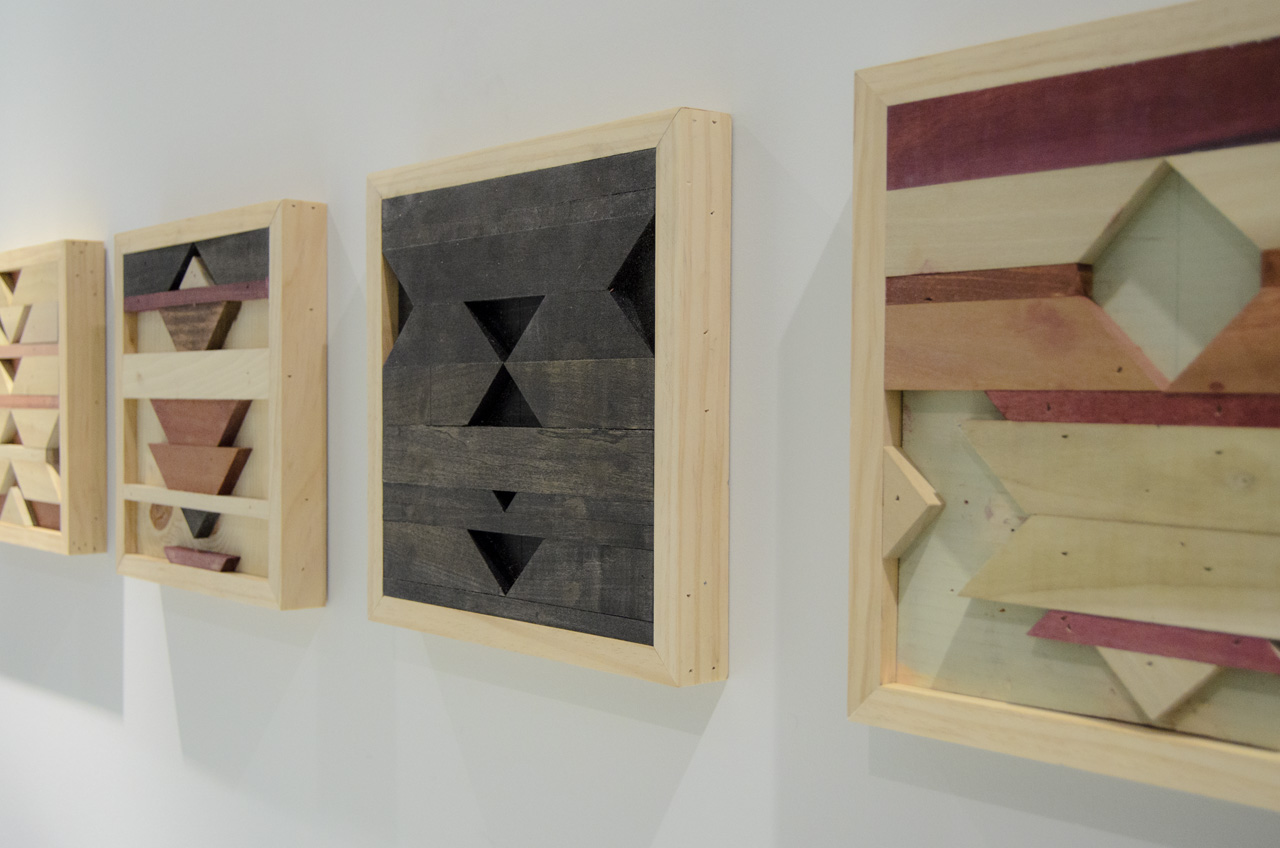 Joseph Duarte’s wooden compositions
Joseph Duarte’s wooden compositions
Transformation is also the basis of the practice of Esteban Delgado, who had previously produced a number of angular installations of cut geometric vinyl shapes which he placed in windows and on walls in various cities in South Texas, a project supported by an Andy Warhol Foundation grant. Delgado’s series made for the SATO exhibition is a continuation of these explorations. The smooth art objects present to the viewer a study of the energy of angular compositions in the upper part, with hints at street fronts in the lower part of the series.
Connie Swann’s works, inspired by an unlikely encounter of the intersection of Piety Street and Desire Street in New Orleans, explore the dissonant characteristics of paint in their texture, gesture and color. Although the series gives an impression of unity at first sight, as much in terms of the overall disposition of the paintings as in the individual compositions, a close examination reveals the tension between paint on wet versus more controlled, thick brushstrokes. In front of Swann’s series are the works by Julie Ledet, products of a ritualistic act which resulted in a transformation of mundane objects, cheesecloths, into “ghostly”, “shroud-life” objects. The uncanny shapes hold in them the memory of the performative action, each telling a story of its own.
The story revealed in Clay McClure’s collage can be read in two stages: at first, the image is anonymous, monochromatic, almost erased, with only the overall features being clear – that we are in front of a boy and his mother, their facial features obliterated; then, as the viewer gets closer, details become visible, namely that the image is composed of utility and medical bills. The scene unfolding before our eyes is that of a family going to a food bank, anonymized by society, dragged into the spiral of poverty by these unforgiving markers of financial hardship.
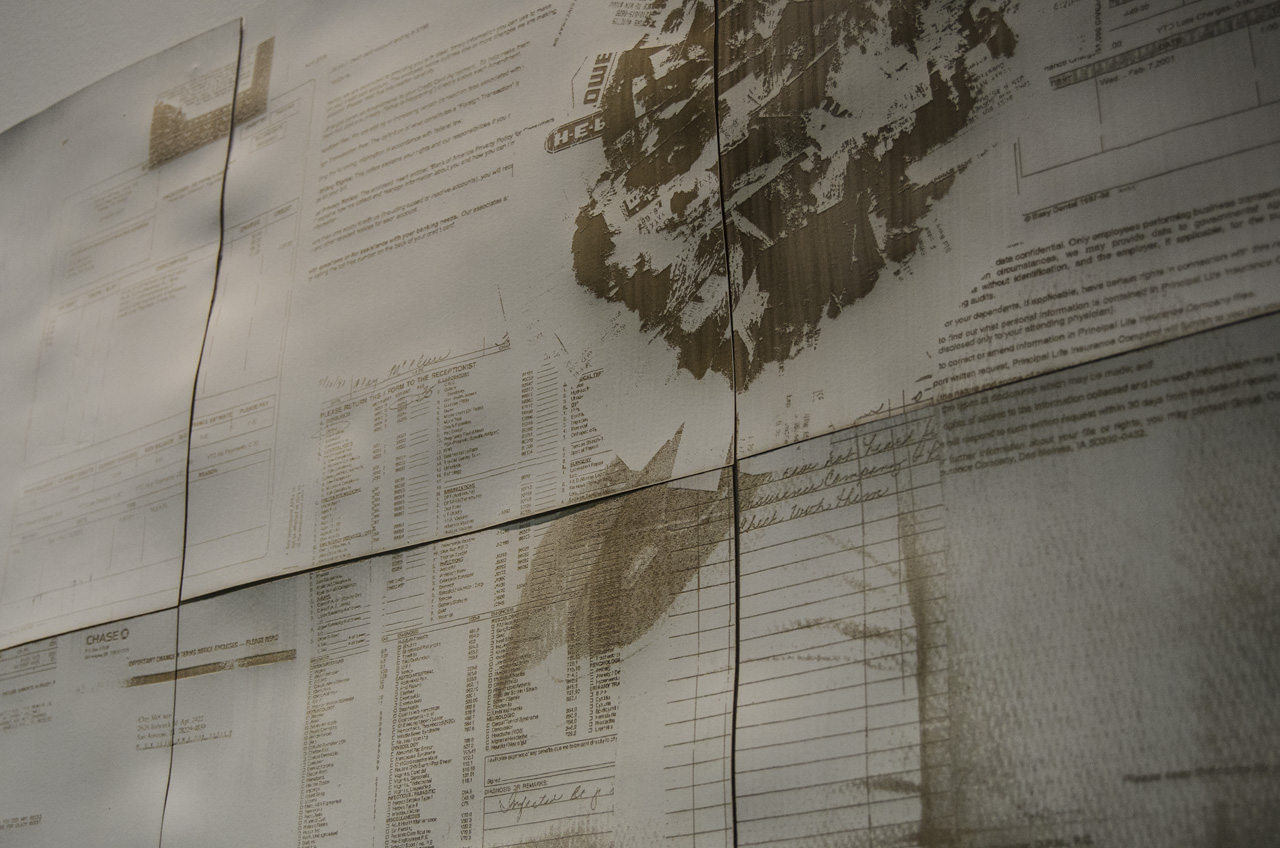 Clay McClure: 16 Tons, Food Bank.
Clay McClure: 16 Tons, Food Bank.
Quiet in their overall aesthetics, the artworks reveal their secrets, bridging the themes of transformation, dissonance and history, as the viewer approaches the works and examines them from an intimate distance, dictated in part by the size of the works and in part by their materiality.
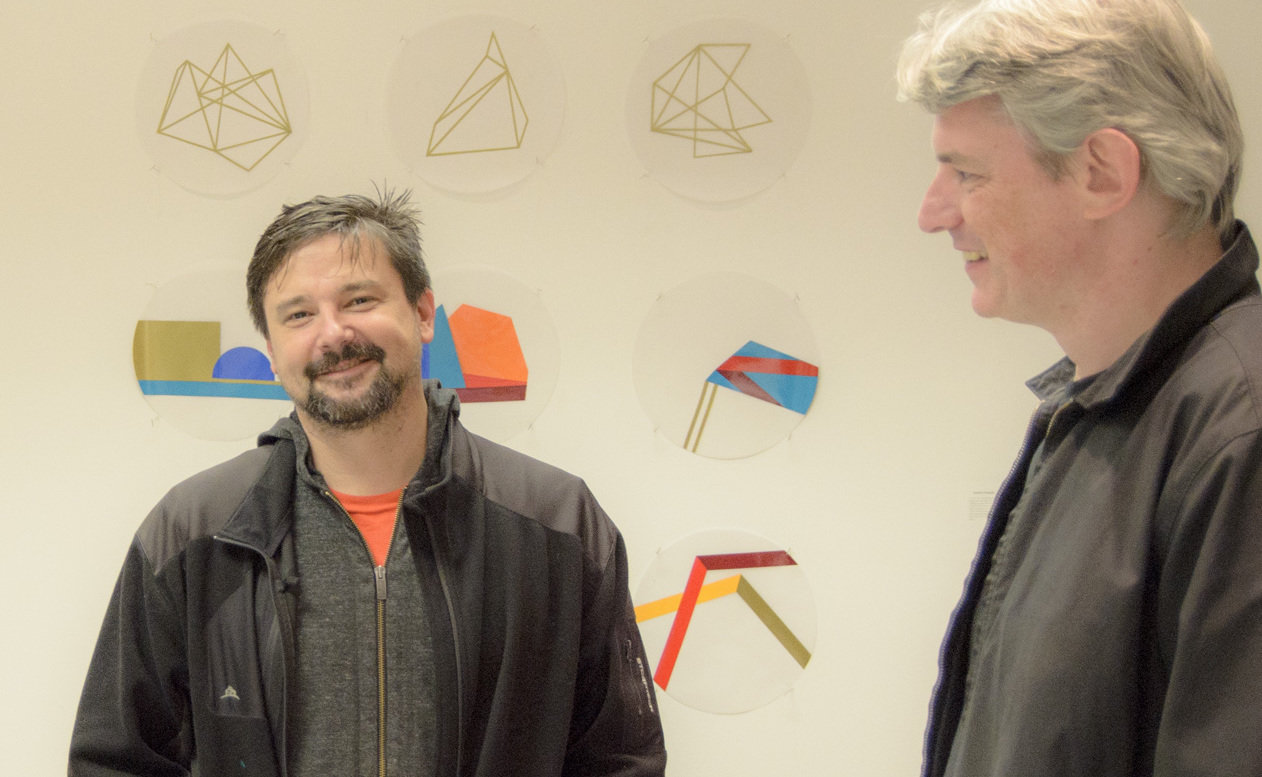 Toronto artist Christian McLeod (left) at the opening reception on October 16, 2014.
Toronto artist Christian McLeod (left) at the opening reception on October 16, 2014.
Text and photo: Elena Iourtaeva
*Exhibition information: October 16 – November 6, 2014, office/exhibition space of PSR Realty 672 Dupont Street #101 (at Christie Street), Toronto.

